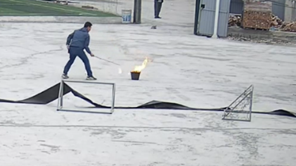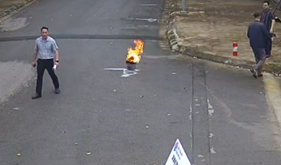Fire & Smoke Model
Model Accuracy
The fire & smoke model has an accuracy of ≥ 95%, under the following conditions:
| Object | Minimum Size Relative to Frame | Operating Weather | Day/Night Performance |
|---|---|---|---|
| Fire | 0.1% | Works well in dry conditions; may be affected by rain or fog | Works both day and night (in color). Night accuracy is ~70–80% of daytime. |
| Smoke | 1.5% | Works well in dry conditions; may be affected by rain or fog | Hardly detectable at night. |
Realistic of Fire and Smoke
- The model is trained on real fire and smoke data. Therefore, similar visual sources such as lighters, fire extinguisher smoke, stage effects, clouds, fog, still images, or similar artificial fire/smoke are either excluded or detected with low confidence. This helps reduce false alerts.
- The model analyzes a set of frames to verify if fire or smoke is real. It also combines this with user-configured parameters before triggering an event. Therefore, it typically takes under30 seconds for the AI to gather sufficient data and generate a reliable event.
Camera Quality
-
Image Clarity: Lower-quality cameras (low resolution, poor focus) reduce the model’s detection accuracy.
-
Lighting Conditions: Bright light or glare may affect detection. Cameras with suitable light sensitivity and good image quality are recommended.
-
Night Vision: To ensure effective nighttime detection, cameras should support color infrared (IR) imaging.
-
Camera Installation Position
- Ensure the monitored area is unobstructed (no trees, covers, or fabric blocking view), so that fire or smoke is visible.
- The camera should face directly towards the protected area, avoiding unrelated zones to improve detection accuracy.
- Position the lens as close as possible to the area to be monitored, with proper focus to avoid blurriness that could reduce algorithm sensitivity.
- Avoid placing the camera where strong natural or artificial light directly hits the lens.
-
Environment
-
Low contrast between fire/smoke and the background reduces detection accuracy. In such cases, a larger or closer fire is needed for reliable detection.
exampleLow Contrast: Fire color blends with background

High Contrast: Fire color stands out clearly

-
When a fire occurs in the protected area, the camera angle should capture detailed fire/smoke visuals. The background should avoid colors similar to fire (red, orange) or smoke (black, white). If unavoidable, add artificial contrasting colors in the background to enhance focus and contrast.
-
It is recommended to use the camera's auto-white balance feature to ensure accurate environmental color representation.
-
Notes
- Red or yellow flags can sometimes be mistaken for fire if the settings are too sensitive. Adjust the task settings parameters.
- Fog and artificial smoke can sometimes be mistaken for real smoke if the settings are too sensitive. Adjust the task settings parameters.
- Rain can reduce recognition capability. Find methods to improve camera visibility.
- Darkness can reduce recognition capability. To increase accuracy, choose a camera with good color light sensitivity. Nighttime always yields more limited fire detection results than daytime. Smoke detection is difficult at night.
- When strong winds distort the image of the fire or reduce the density of the smoke, the AI's detection capability decreases. The detection distance may be shortened. AI will still be able to detect fires and smoke according to the announced frame rate, but the accuracy will be much lower than the advertised accuracy.
- Intensity of Fire and Smoke: If the movement of fire and smoke is almost static and not clear enough, the AI's detection capability will decrease because the model has an algorithm that distinguishes it from static fire and smoke images.